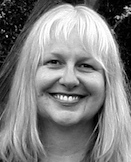Tom Seaver, the practice of "always looking," seeing the essence of things, and Gesture Drawing2/27/2021 by Karen Lynn Ingalls You may know that I had the wonderful gift of meeting Tom Seaver in 2015, as I was in the process of taking down an art show. We talked for 20-25 minutes about art (he loved art). He was such a wise soul — I wrote down our conversation as soon as I got home, so I wouldn't forget anything. By the way, he introduced himself as Tom, without his last name, and in the course of the conversation, told me he "was a ball player." What a humble guy! I was reminded of it this week by a friendly email I received about him, and about how he told me was “always looking,” referring not only to art, but also to everything around him — looking, seeing, and taking it in. It occurs to me that that’s not how most folks operate. We get into habits of thinking and speaking, and it’s so easy to not really look at what’s around us. That’s where making art can help us get out of those habits, and learn to truly see the things and people and animals and earth all around us. I’ve been talking about drawing a lot with my students lately, because it’s a truly wonderful way to strengthen those skills. It’s not only about the hand-eye coordination; it’s also about truly seeing what’s in front of us — about seeing it with new eyes, in new ways — so that we’re taking it all in, not defining it in terms of what we already know. Gesture drawing, which you see here, is about just that. If you have a minute or less, can you capture the essence of someone's stance? Their action? Their gesture? It's all about really "looking," as Tom Seaver put it, about really seeing what's in front of you. When we paint, it’s easy to fall into the trap of painting what we know something looks like, instead of what it really looks like. We think about it (and name it), instead of seeing it. Thinking about something and really seeing it are two entirely different states of mind — and we need to really see things, if we want to make art. That’s why turning things upside down helps. It takes us out of the rational mind that says, “Oh, yeah. Those are trees, with branches, and leaves, and twigs.” It burrows right down to the tiny details, missing the sight of the forest for all the little twigs. Or that says, looking at a person, "Oh, look at those eyebrows,” or perhaps the details of strands of hair, and misses how a person is standing, or turning, or moving. Quick sketching helps us practice how to see — and sketching starting with the big shapes, the gestures, how things relate to each other. When you’ve truly seen all those things, seen how they relate to each other — when you've got their essence — then you might add twigs. But only if you really, really need them, to bring your vision to life. And, if you're here in Calistoga, I hope you were able to see the poetry postings around town in February, as part of the Calistoga Art Center's Poetry Walk. If you’re always looking, and taking everything in, like Tom Seaver, you won’t miss things like poems — or who knows what wonderful surprises — that just might be somewhere along your walking route. What a wonderful way to practice seeing!
0 Comments
Leave a Reply. |
Karen Lynn IngallsI am a working artist in Napa and Sonoma Counties, in northern California. I paint colorist landscapes of rural California, teach art classes, workshops, and private lessons, live in Calistoga, and have my art studio in Santa Rosa, California. Archives
December 2023
Categories
All
|









 RSS Feed
RSS Feed

